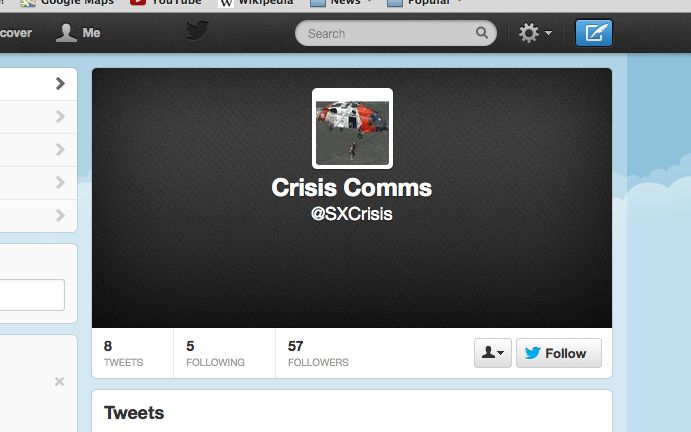It’s fair to say that America has, at best, a mixed record responding to natural disasters. The high profile failures of Hurricane Katrina still loom large, and while the response to Hurricane Sandy wasn’t the same unmitigated fiasco, such a statement is damning with faint praise.
The government – some of it anyway – knows it has a lot of improving to do. On Friday at SXSW, a panel of communication and disaster response experts from the U.S. Coast Guard and Air Force talked about how they’re already using social media and cloud computing to improve organization and communication during disasters, helping to save lives in the process.
The panel consisted of Brandon Brewer, a former USCG public information officer; and the brother and sister duo of Lt. Anastacia and Cpt. John Visnecki, she a Coast Guard public affairs officer and the guard’s official blogger (yes, they have an official blogger) and he a U.S. Air Force cyberspace control officer (yes, that’s his actual job title). According to everyone on the panel, job one is getting all parties involved in disaster response on the same page early. Make sure every one buys in to the plan of attack and then use all the media resources at your disposal to “Make the megaphone bigger,” in the words of John Visnecki.
When the panel’s moderator, former NBC correspondent Hanson Hosein, posited a hypothetical scenario in which a tornado struck Austin in the middle of SXSW, Cpt. Visnecki, and Mr. Brewer described a plan in which the military could enter the disaster area as quickly as possible and set up wide area networks in a short time to get communications back up and running; not just for the benefit of the rescue forces, but for the victims as well. The networks set up by the rescue teams can be used to disseminate important and constantly updated information to local residents, all of the data for which is hosted offsite – or in the cloud if you prefer the hipper, catchier term.
Anastacia Visnecki reinforced that notion. While the other panelists spoke, Visnecki had been tinkering on a laptop and explained that in the time it had taken her coleagues to explain those concepts, she had set up a complete working model of a Joint Information Center, or JIC, a central control hub for coordinating movements of rescue teams, receiving emails from other rescuers and citizens, and a Twitter feed to quickly release new information. (You can take a look for yourself by taking a peek at the twitter profile @sxcrisis.)
As recently as the days surrounding Katrina, Anastacia Visnecki said communication meant “getting your press releases out.” Now, it’s a comprehensive multimedia effort to reach as many people as possible with the most accurate and helpful information, as quickly as possible.
Visnecki did emphasize, however, that for disaster victims relying solely on social media to call for help is a risky proposition, and she stated that a 911 call or even a radio transmission is much more quickly and easily pinpointed. But now the accepted wisdom in disaster relief is to use all the tools at your disposal.
In short, the good guys are trying their best, people. They really truly are.


Comments are closed.